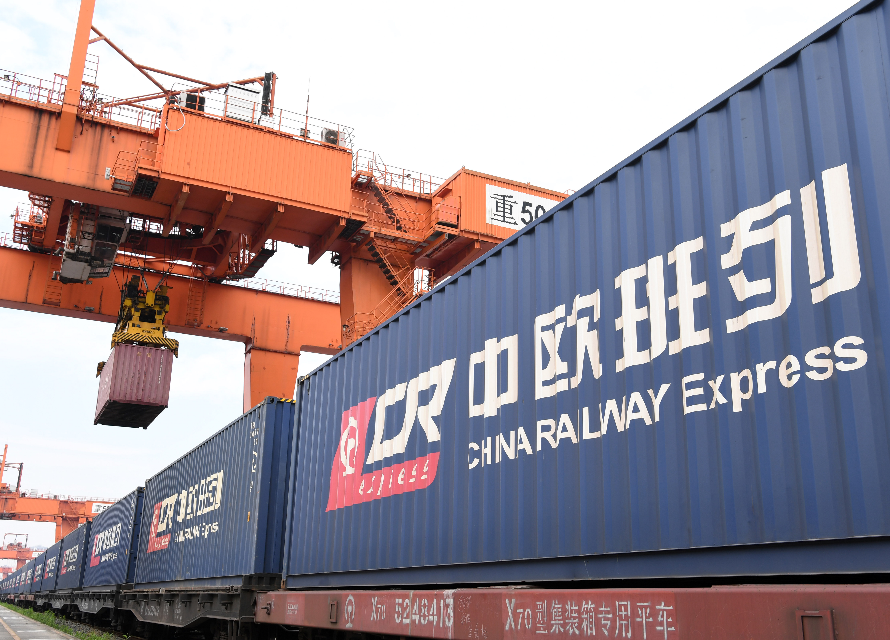CHONGQING, Feb. 2 (Xinhua) -- As the Chinese Spring Festival approaches, local residents are swarming into the Belt and Road Commodity Exhibition and Trading Center in southwest China's Chongqing Municipality to buy foreign goods.
With an area of 47,000 square meters, the center has more than 40 national pavilions. As one of the earliest pavilions, the Russian pavilion is also the largest one, exhibiting and selling thousands of kinds of goods, such as honey, colza oil and biscuits.
"Thanks to the Yuman'e (Chongqing-Manzhouli-Russia) International Railway Logistics Channel, these Russian commodities are able to travel thousands of km to Chongqing customers," said Liu Xiaomin, director of the Russian pavilion.
One decade ago, the development of Chongqing, an inland city, was once greatly restricted by traffic factors such as long international logistics cycles, high transport costs and poor transport passages.
To expand the opening-up and strengthen the economic and trade exchanges with European countries, Chongqing initiated the construction of the Yuman'e International Railway Logistics Channel.
Completing its first test in January 2011, the Yuman'e logistics channel was officially put into operation in 2014. Cargo trains travel between Chongqing and Russia via Manzhouli, a land port in north China's Inner Mongolia Autonomous Region.
It previously took at least two months to transport Russian goods to Chongqing by water. Therefore, some products with short shelf lives could not enter the Chongqing market, said Liu, adding that the Yuman'e cut the freight time to only eight days.
Last year, although the COVID-19 pandemic dealt a heavy blow to international logistics, the Yuman'e handled 1,355 cargo train trips, soaring 65 percent year on year. By the end of last year, the route has seen a total of 2,680 trips since it started operation.
"The pandemic has severely affected air and sea traffic, but the transport capacity of cargo trains has surged due to advantages such as short freight time, low price and high efficiency," said Qi Dan, general manager of the Yuxinou (Chongqing) Logistics.
In terms of cargo, the outbound cargo train service is loaded with goods like auto parts, machinery accessories and daily commodities, while the inbound trains mainly carry meat, sunflower oil and other agricultural products.
During the pandemic, the variety of cargo has also grown more diverse. In 2020, the channel successfully completed the first cold chain transport test of chicken feet from Russia, and also exported domestic fruit such as mango and citrus to Russia for the first time through full cold-chain railway transport.
From sporadic trips to three or four trips a day, the Yuman'e has seen a growing frequency of freight trains, which makes the economic and trade exchanges closer between Chongqing and Russia, said Qi.
According to data from Chongqing Customs, the trade volume between the two sides reached 8.806 billion yuan (about 1.36 billion U.S. dollars) last year, up 39.9 percent year on year.
Of the total, the export value was nearly 6.9 billion yuan and the import value was over 1.9 billion yuan, an annual increase of 31.3 percent and 83 percent, respectively.
"In the future, we will explore more Russian goods suitable for Chongqing and western China," Qi said. Enditem




 A single purchase
A single purchase









